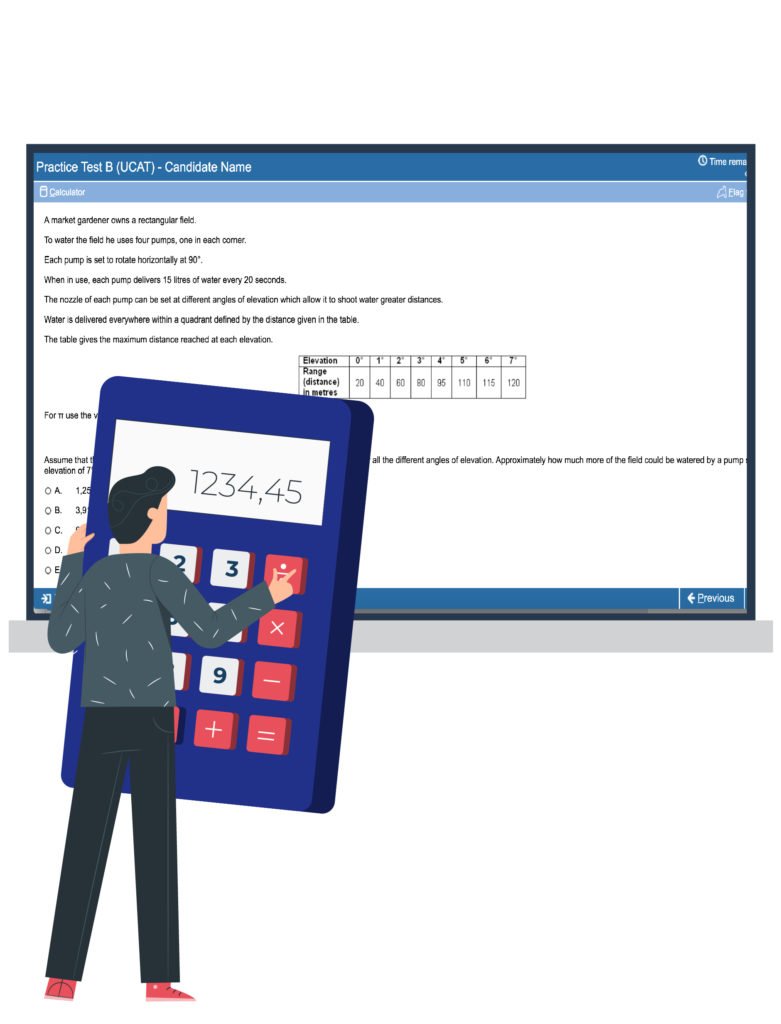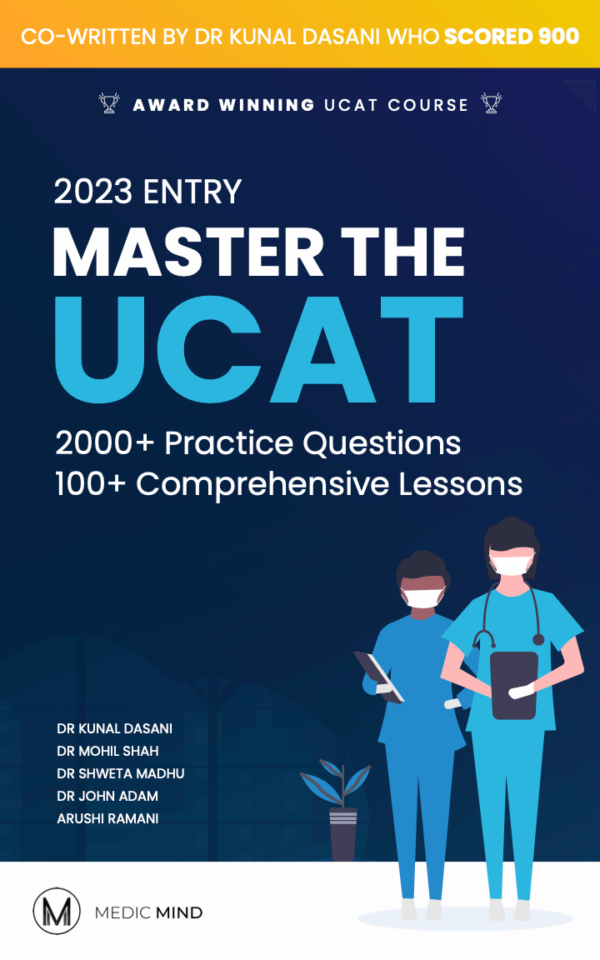Loading...

UCAT Quantitative Reasoning: 7 Tips for UCAT success
Quantitative Reasoning is one of the most divisive UCAT suctions. Those that love maths enjoy it, those that don’t find it a challenge. But with careful planning and preparation anyone can be successful.
Even if you love maths familiarising yourself with the questions is still a must. So regardless of your level or confidence in maths you can find our top 7 tips below.
1. Practice Each Quantitative Reasoning Topic
Like every part of the UCAT there are multiple different question types in this section too. This includes ratios, percentages, graphs, simple and complex calculation. Some of these, students may find easy, some hard. But it is important that you practice every type so you know what to expect and can I identify any areas where you may struggle.
Many students find it useful to keep a list of the question types they have come across. So you can make sure you have covered the content of each type. This will allow you to make note of the ones you are particularly struggling with.
If there is something you are finding particularly difficult then one of our one-to-one tutors may be able to help you with some tailored lessons.
2. Find Appropriate Practice Material
There are a lot of different resources out there for practising for Quantitative Reasoning. We have written a whole article on those available and some books that may be useful. But, be careful with the ones you choose.
The ISC 1250 book for example is often found to be more difficult than the actual test. So choose diligently so that you have adequate questions to practise, but also so as not to overwhelm yourself.
3. Master The Calculator
Being proficient in using the on-screen calculator can have a massive impact on both your timings and accuracy for this section. It is key that you practice with it prior to the test so you know how to use it effectively.

But as many of you will find when practising with this calculator, it is quite slow. The fact it is on-screen really impacts your ability to use it compared to a physical calculator or your phone. This is why mastering it is key to both speed and success. We have a whole article on the UCAT calculator to provide you with further tips.
4. Know Your Strengths (And Weaknesses)
As mentioned at the beginning some people struggle with maths more than others. If this is the case make sure you do not neglect this section. Just a few hours of carefully structured practise looking at ratios, percentages and practising your mental maths could make a huge difference.

Knowing which type of questions you’re stronger at is also useful. This means that come exam day, you can prioritise your time on these questions. If you are still finding it hard then perhaps some input from one of our one to one tutors could have a positive impact on your preparation.
Again it is important not to neglect a certain question type just because you find it hard. As with all UCAT sections you need to try your best to be consistent across all the questions.
5. Quantitative Reasoning Timing Tip: Mental Maths
Just as important as knowing when to use the calculator, is knowing when not to use it. Using mental maths instead of inputting the numbers into the calculator you could save time on the question. If this happens over a number of questions it could save you enough time to ensure you finish the section.

Spending a little bit of time practising your mental maths and times tables can really go a long way to help speed up your performance. And this is one of the key things you can do ahead of the UCAT to improve your Quantitative Reasoning score.
It is important to remember that the UCAT is not negatively marked. So if you have managed to estimate a rough figure, and you have run out of time, select the one closest to that. It is critical that you leave no question unanswered – even if it is just your best guess.
6. Quantitative Reasoning Timing Tip: Write Down Calculations Mid Steps
The UCAT calculator does not have an answer function, so it can sometimes happen that you lose numbers during longer complex calculations. To avoid this happening, it can be worth making a quick note of the mid step numbers on your white board, so as to prevent this happening to you.
Once again this reiterates why it is so important that you get used to the calculator before the test. You need to know what question types it will and won’t be helpful for.
7. Quantitative Reasoning Timing Tip: Use The Flagging Function
If you are struggling with one question, do not get caught up on it and make sure to use the flagging function. Because Quantitative Reasoning questions do not have quite as long questions as other sections, it is easier to come back to them later.

And hopefully this allow you to be able to pick up where you left off on a difficult question and finish it at the end.
Conclusion
Regardless of how much you enjoy maths, you can still score very highly in UCAT Quantitative Reasoning. Try not to let your previous maths grades put you off this section. The questions are at the level of a good secondary school pass, so you won’t be asked to do anything exceptionally difficult in the exam. Our best advice is to review the basics, practice them and learn a few time saving tips.
Frequently Asked Question
→What is UCAT Quantitative Reasoning?
UCAT Quantitative Reasoning is one of the subtests of the University Clinical Aptitude Test (UCAT) used in Australia and New Zealand. This subtest assesses an applicant’s ability to interpret and manipulate numerical and statistical data.
→How many questions are on the UCAT Quantitative Reasoning subtest?
The UCAT Quantitative Reasoning subtest consists of 36 questions.
→What types of questions are on the UCAT Quantitative Reasoning subtest?
The UCAT Quantitative Reasoning subtest includes questions on arithmetic, algebra, geometry, and probability. The questions range in difficulty from basic to advanced.
→How can I prepare for the UCAT Quantitative Reasoning subtest?
You can prepare for the UCAT Quantitative Reasoning subtest by practicing with UCAT practice tests and sample questions, reviewing mathematical concepts and formulas, and developing test-taking strategies. You can also enroll in UCAT preparation courses or hire a tutor to provide additional support and guidance.
→What are some tips for succeeding on the UCAT Quantitative Reasoning subtest?
Here are seven tips for UCAT Quantitative Reasoning success:
- Practice regularly with timed questions to improve speed and accuracy.
- Learn to recognize common question types and develop strategies for each type.
- Focus on mastering basic mathematical concepts, as many questions are based on fundamental principles.
- Use estimation and approximation techniques to simplify complex calculations.
- Read the question carefully and pay attention to units and wording.
- Eliminate obviously incorrect answer choices to increase the chances of selecting the correct answer.
- Don’t spend too much time on any one question, as each question is worth the same amount of points.
→How much time do I have for the UCAT Quantitative Reasoning section?
You have 24 minutes to complete the UCAT Quantitative Reasoning section, which includes reading and answering 36 multiple-choice questions. It is important to manage your time carefully to ensure you can answer as many questions as possible within the allotted time.
Related links
Personalised lessons and regular progress updates to support you in acing the UCAT
With over 1000 questions, mock paper walkthroughs, timing tips, and more!
Live day, packed full of UCAT advice and tips from the experts. Taking you through all UCAT sections with worked examples






Was this article helpful?
Still got a question? Leave a comment
Leave a comment
1020 Comments
WymSkPhNMedic Mind Tutor
27 September 2023
1